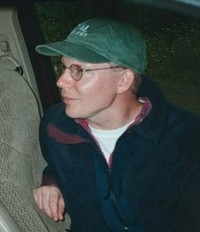Gregory Pemberton

1998 C.I.M. Student Essay Competition (Geological Society)
1995 - The MacEachern - Ponsford Memorial Award
B. Sc. Honours Thesis
Dating of Alteration at the Radiomiro Tomic Porphyry Copper Deposit, Northern Chile by the High Precision 40Ar/39Ar Method.
(PDF - 13.9 Mb)
The Radomiro Tomic (RT) porphyry copper deposit is located approximately 8-10km north of the Chuquicamata mine and 245km northeast of the port city of Antofagasta. Estimates place the deposit at over 800 million tonnes of ore with an average grade of 0.59% Cu (mostly supergene ore) and a mine life of 22 years. RT does not outcrop as the entire deposit is buried beneath Miocene piedmont gravels up to 200m in thickness and has been known only from drillcore and limited underground workings. Stripping is now underway and the mine is due to start operating in 1997 as a new separate division of CODELCO, the Chilean national copper mining company.
The deposit is hosted within an intrusive body of quartz monzodiorite composition that is approximately lower to middle Oligocene in age and was emplaced within the regional N-S trending Domeyko Fault system. This system is spatially associated with all the major porphyry deposits in northern Chile.
High precision, stepwise degassing 40Ar/39Ar dating was conducted at Dalhousie University to determine the ages of the potassic, argillic and quartz-sericite alteration assemblages at Radomiro Tomic. K-feldspar, biotite and sericite grains were hand picked from six drillcore samples representing the three hydrothermal alteration zones. Results are suggestive of potassic and argillic alteration assemblages having an average age of 32.6±0.3Ma as part of an initial hydrothermal event. As well, a younger hydrothermal event was dated to 31.8±0.3Ma from quartz-sericitic alteration minerals. Age differences among the potassic and argillic alteration minerals (K-feldspar and biotite) having high or low closure temperatures are not detectable, are indicative of rapid cooling following emplacement of the host porphyry. 39Ar degassing plateau patterns combined with X-ray diffraction analyses on the K-feldspar samples also support the scenario of a rapid decrease in temperature to less than 150oC in the order of hundreds of thousands of years, rather than millions, following each hydrothermal event.
A full suite of ancillary data was generated on the dated samples establishing the close similarity of the petrology, mineralogy and chemistry to samples of similar alteration types from Chuquicamata.
Keywords: Radomiro Tomic, porphyry copper deposit, Chile, argon dating, geochronology, hydrothermal, alteration, potassic, argillic, quartz-sericitic, Chuquicamata
Pages: 177
Supervisors: Marcos Zentilli
Publications
Pemberton, G.B., 1997,'The Geochronology of the Radomiro Tomic Porphyry Copper Deposit, Northern Chile', Atlantic Geology, V33, 1, pp73-74
Pemberton, G.B., 1996, 'Fluorescence of Apatite', Atlantic Geology, V32, 1, p83
Pemberton, G.B. and Grist, A.M., 1995, 'Fission Track Dating of Natural and Man-Made Glasses: Calibration and Problems', Atlantic Geology, V31, 1, p57



